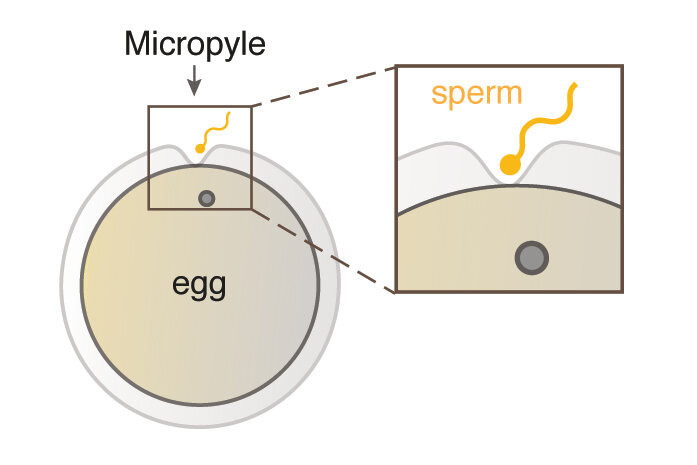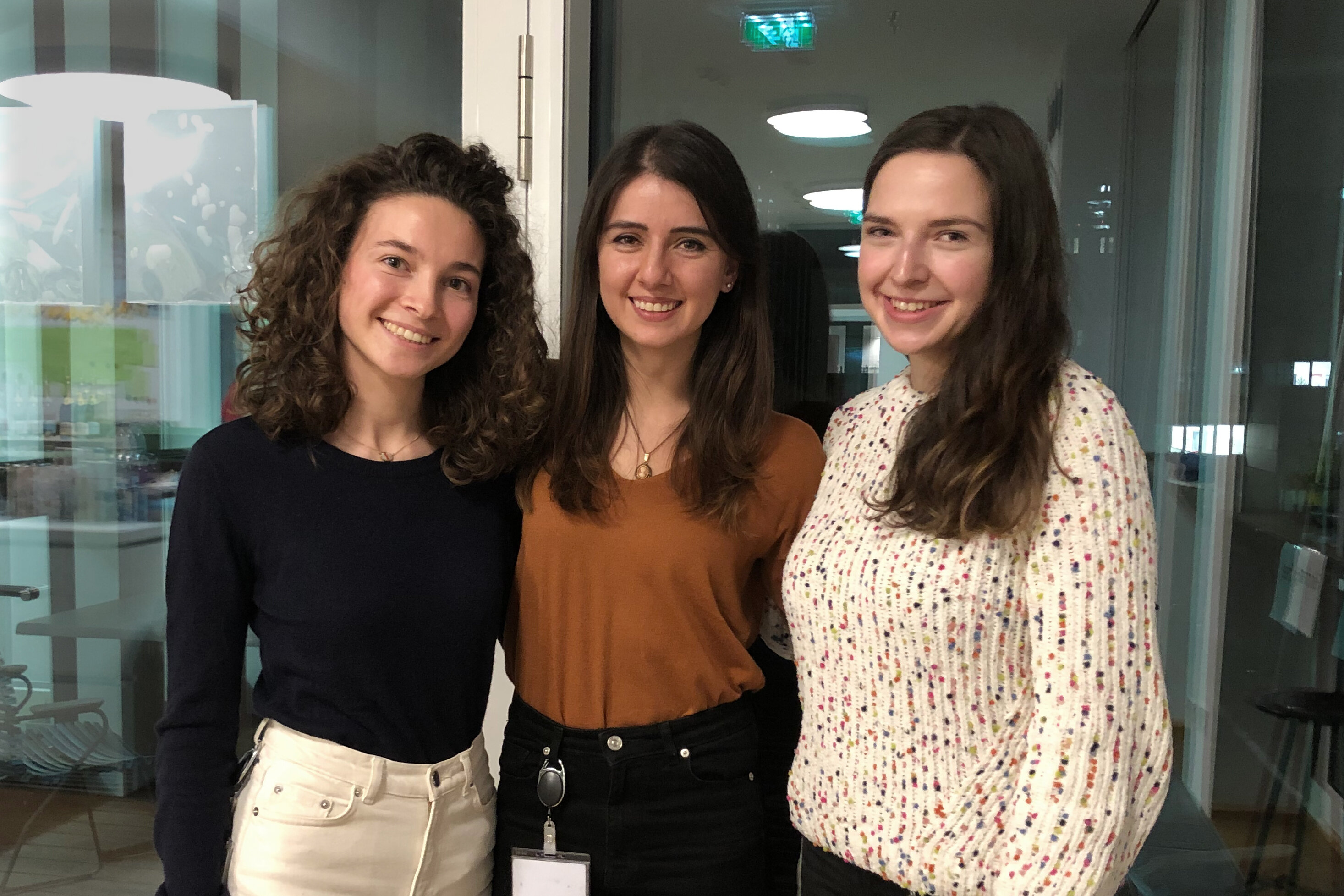IMP students characterise a sperm protein essential for zebrafish fertilisation

During fertilisation, egg and sperm rely on a host of membrane proteins to bind and fuse. Two students at the IMP examined the function of Spaca6 – a sperm protein essential for fertilisation in mice – in zebrafish sperm. The scientists found that Spaca6 is also crucial for sperm-egg binding in fish, and that it may act in concert with other sperm proteins. Their findings are now reported in Frontiers in Cell and Developmental Biology.
In all sexually reproducing organisms, the life of an individual starts with the fusion of a female gamete, the egg, and a male gamete, the sperm, to form the first cell of the embryo. While fertilisation is one of the most fundamental biological processes, its underlying molecular mechanisms are still poorly understood. One of the goals of the lab ofAndrea Pauli at the IMP is to characterise the molecular pathways that enable sperm and egg to bind and fuse.
In recent years, scientists have identified several proteins that are essential for sperm and egg to interact. One of these proteins is SPACA6 (Sperm Acrosome Associated 6), which is required for sperm-egg fusion in mice, but whose function is unknown in other vertebrates.
In their mission to uncover the molecular intricacies of fertilisation, scientists in the Pauli Lab set out to investigate the role of Spaca6 in zebrafish. Lab members of all levels, including two students supervised by postdoc Victoria Deneke, contributed to the study, now published inFrontiers in Cell and Developmental Biology.
An essential function across vertebrates
To analyse Spaca6’s function in zebrafish, the researchers generated spaca6 mutant zebrafish. They then measured the ability of these mutated sperm to perform the main steps of fertilisation.
A zebrafish egg is coated with a protective layer called the chorion, which bears a single, funnel-shaped sperm entry point, the micropyle. Healthy sperm accumulate at this gate, rushing and pushing in their race to get in – modified sperm, on the other hand, behaved oddly.
“We found that mutant sperm had normal morphology and motility. However, when these sperm approached a wild-type egg, they entered the micropyle but drifted away after a few minutes without binding to the egg membrane,” explains Mirjam Binner, former student at the IMP and co-first author of the study.
The scientists removed the chorion to more closely observe the event of sperm binding to the egg membrane. While normal sperm would bind to the surface of the egg, sperm lacking Spaca6 could not stably bind to the egg membrane. Reinserting Spaca6 into these sperm with a transgenic approach rescued male fertility, thereby demonstrating the crucial role of Spaca6 for fertilisation in fish.

Spaca6 may not act alone
Ina recent study published via the preprint server bioRxiv, the Pauli Lab and their collaborators showed that two other sperm proteins, Dcst1 and Dcst2, are crucial for fertilisation in mice and in fish. Another recent study showed that in mice,when Dcst1 and 2 are absent, Spaca6 levels drop.
“We wanted to further explore the connection between Dcst proteins and Spaca6 in zebrafish, so we measured the expression of Dcst2 in sperm lacking Spaca6,” says Victoria Deneke. Experiments done by research assistant Karin Panser provided new insights into the link between Spaca6 and Dcst2: sperm lacking Spaca6 had very low levels of Dcst2, which suggests that Spaca6 regulates Dcst2 levels in fish and that sperm fertility proteins might be interdependent.
Of learning and mentorship
“I am very grateful to the Pauli Lab and the IMP for the opportunity to work on this project right after my bachelor's degree. Our mentors and the facilities staff have been extremely supportive through the whole process,” says Anna Kogan, co-first author of the study.
Mirjam and Anna joined the IMP in the summer and autumn of 2020, respectively. They worked on the project together and continued to collaborate after they had left the institute, organising calls between Austria, Finland, and Russia to write their manuscript under the supervision of Victoria Deneke and Andrea Pauli. Mirjam finished her master’s and will take up an analyst position with Boehringer Ingelheim, while Anna has started a doctorate at the University of Oxford.
“I am very proud of the outcomes of this paper,” says Andrea Pauli, group leader at the IMP. “Mirjam and Anna took the lead from the experimental phase to the publishing phase, skilfully guided and advised by Victoria. They learned a lot in the process.” Pauli is full of praise for the three key contributors and highlights their dedication as essential for the project: “This wouldn’t have worked with any students or mentor – Anna, Mirjam, and Victoria were all very motivated, and it was a hugely enriching experience for us all.”
